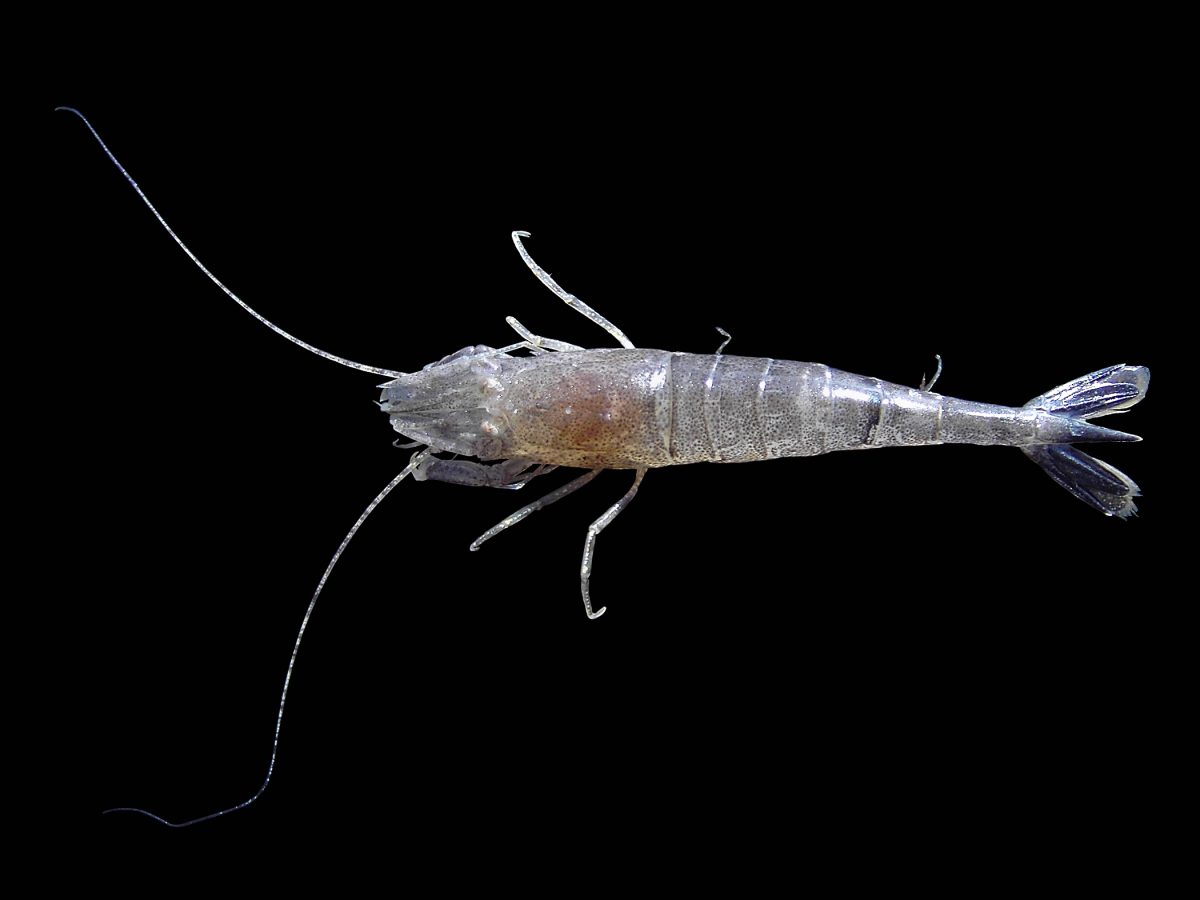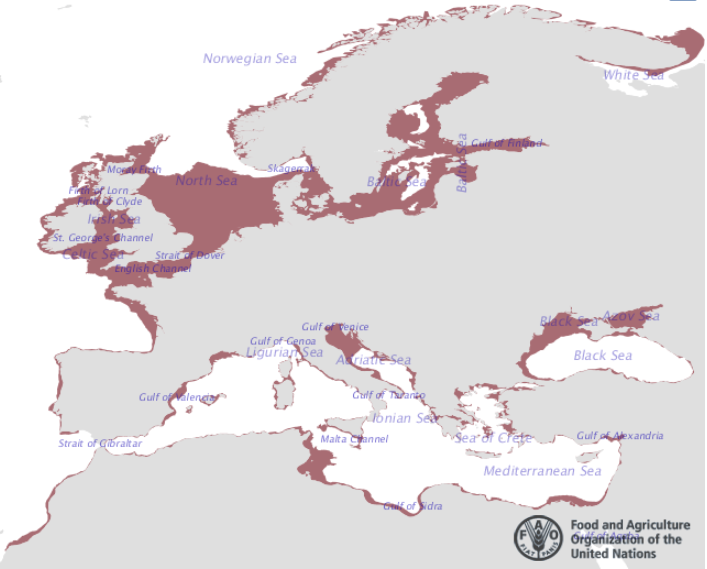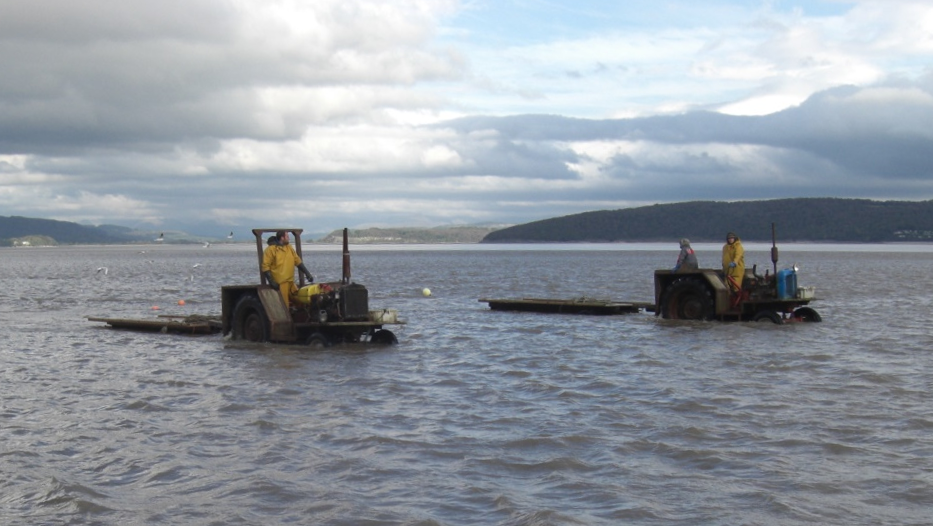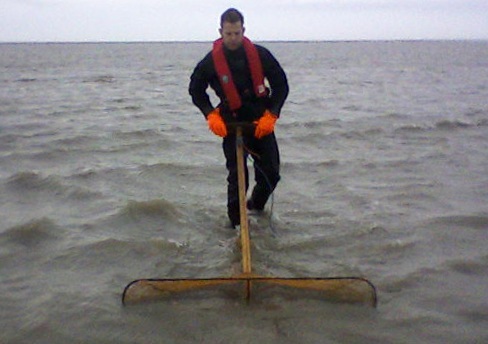Shrimp

© Hans Hillewaert / via Wikimedia Commons
Scientific name: Crangon crangon
Also Known As: Brown Shrimp
MCRS: None, however catches must be riddled to comply with minimum marketable sizes (total length: above 46 mm for females and above 48 mm for males).
Description
Brown shrimp are from the same family as crabs and lobsters. A long thin animal up to 8.5 mm in length they are mottled brown in colour. They have a short blunt ended rostrum between the eyes, a main antenna as long as the body, and a fanned tail. They can change colour using chromatophores depending on the colour of the sea bed.
Habitat and Distribution

Brown shrimp can be found over sandy and muddy bottoms in shallow coastal waters from the intertidal down to 150m; it prefers certain grain sizes between 125 and 710 µm and is often buried with only its eyes and antennae above the surface to avoid predation and to ambush prey. Adults migrate offshore November to March to avoid low salinity water.
The species is found around all British and Irish coasts and from the south coast of Finland to the Baltic and Mediterranean.
Life Cycle, Reproduction and Feeding
Shrimps follow a yearly cycle, but there can be spatial and temporal variations to it. Generally shrimp move inshore on to feeding grounds around March. Foraging activity is light controlled and occurs at night. They will consume any animal material they come across including polychaetes, fish and molluscs plus algae
In May, egg bearing females move offshore to hatch their larvae, after which the female shrimp move back inshore. Eggs are carried on the female shrimp’s abdominal appendages, similar to lobsters, for around 4-13 weeks depending on water temperature. In summer the juveniles migrate inshore to exploit the plankton bloom, which occurs at the same time. This also offers some protection from predators. By October/November most of the shrimps have moved back offshore. After reaching maturity, which occurs at around 12-13 mm carapace length, spawning occurs twice a year. Berried females have been found for 46 weeks of the year with peak reproductive periods where females carry both ‘summer’ and ‘winter’ eggs. The maximum age of brown shrimp is reported as 3.3 years but the majority of populations are usually in the first year class.
In the NWIFCA District
Fishing for shrimp in the District goes back hundreds of years and is a local artisanal industry still practised today. The knowledge of the fishery is often passed down through fishing families with target areas still very similar as in years gone by. Intertidal shrimping used to be carried out using a horse and cart now replaced by tractors. There are also boat fisheries. Both use a trawl (an enclosed net with an open mouth attached to a lightweight rectangular metal frame or beam) attached to either the boat or tractor and dragged across the sea bed. Fisheries occur within coastal waters usually within 6-8 miles of the coast, within and around the edges of channels. In the District fisheries occur over the sandy/muddy habitats preferred by shrimps, in bays and estuaries including the Solway Firth, Morecambe Bay, the Ribble Estuary and the Dee Estuary. They are seasonal fisheries, historically the season starting in spring as the water temperature increases, with a lull in summer and ending in late autumn as the temperature decreases again. Often fishers will fish for other species, such as cockles or mussels, outside of the shrimping season.

Brown shrimp beam trawls are designed to skim over the seabed rather than dig in so as to decrease drag on the net and the amount of unwanted substrate in the net.

Shrimp can also be fished recreationally through push netting carried out by hand. A net is attached to a long handle and is pushed along the sea bed in shallow water. The mouth of the net is attached to a metal ring to hold it open, the contents collected into the back of the net.
Fisheries Management
There are multiple byelaws regulating the methods of fishing for shrimp in the District. These include restrictions on the dimensions of gear, and the requirement to riddle the catch to reduce the amount of immature fish by-catch. The regulations vary in different parts of the District. To read more about these and where they apply click here.
The use of bottom trawled gears is prohibited in ‘high risk’ habitats where the effect of the gear is likely to have an adverse effect on sensitive habitats. Within closed areas beam trawling for shrimp is prohibited. To read more about this click here.
There are also national regulations that apply to this fishery. EU Technical Regulations (EU 850/98) restrict the type and specification of gear that can be used to catch this species. Modifications such as specific net mesh sizes and sieve nets must be employed to reduce the amount of non-target species or smaller individuals caught in the trawl. To read more about these regulations click here.
Where commercial trawling and push netting occurs in Marine Protected Areas it undergoes an assessment to ensure the activity does not cause risk to conservation features. HRAs carried out for trawling and push netting in the District’s European Marine Sites can be found here.
Additional Information
The species has a high productivity and is an important food source for birds, fish and crustaceans. Brown shrimp moult frequently depending on temperature, and increase in size by 1-3 mm with each moult.